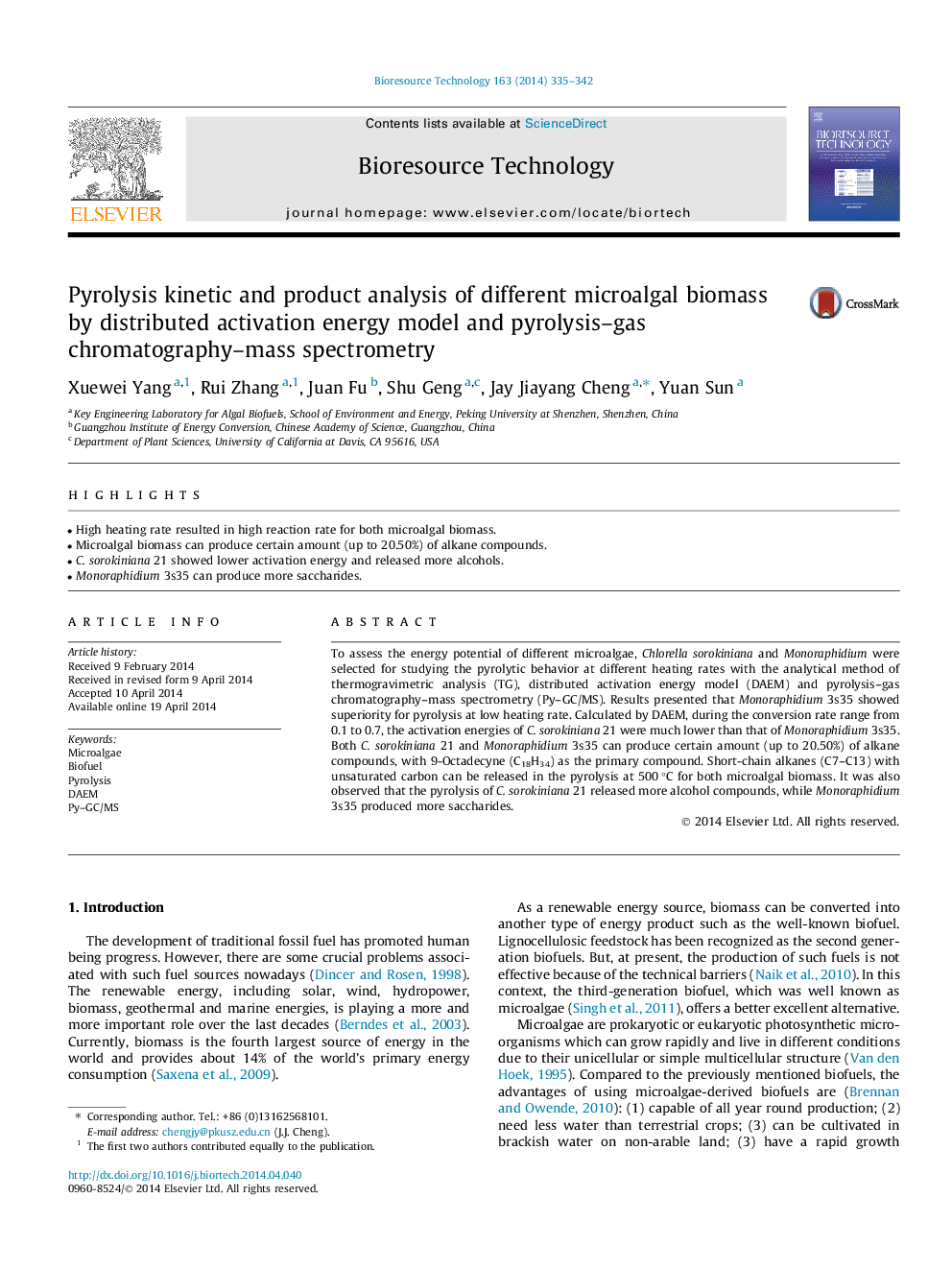| کد مقاله | کد نشریه | سال انتشار | مقاله انگلیسی | نسخه تمام متن |
|---|---|---|---|---|
| 680888 | 1459980 | 2014 | 8 صفحه PDF | دانلود رایگان |
• High heating rate resulted in high reaction rate for both microalgal biomass.
• Microalgal biomass can produce certain amount (up to 20.50%) of alkane compounds.
• C. sorokiniana 21 showed lower activation energy and released more alcohols.
• Monoraphidium 3s35 can produce more saccharides.
To assess the energy potential of different microalgae, Chlorella sorokiniana and Monoraphidium were selected for studying the pyrolytic behavior at different heating rates with the analytical method of thermogravimetric analysis (TG), distributed activation energy model (DAEM) and pyrolysis–gas chromatography–mass spectrometry (Py–GC/MS). Results presented that Monoraphidium 3s35 showed superiority for pyrolysis at low heating rate. Calculated by DAEM, during the conversion rate range from 0.1 to 0.7, the activation energies of C. sorokiniana 21 were much lower than that of Monoraphidium 3s35. Both C. sorokiniana 21 and Monoraphidium 3s35 can produce certain amount (up to 20.50%) of alkane compounds, with 9-Octadecyne (C18H34) as the primary compound. Short-chain alkanes (C7–C13) with unsaturated carbon can be released in the pyrolysis at 500 °C for both microalgal biomass. It was also observed that the pyrolysis of C. sorokiniana 21 released more alcohol compounds, while Monoraphidium 3s35 produced more saccharides.
Journal: Bioresource Technology - Volume 163, July 2014, Pages 335–342
